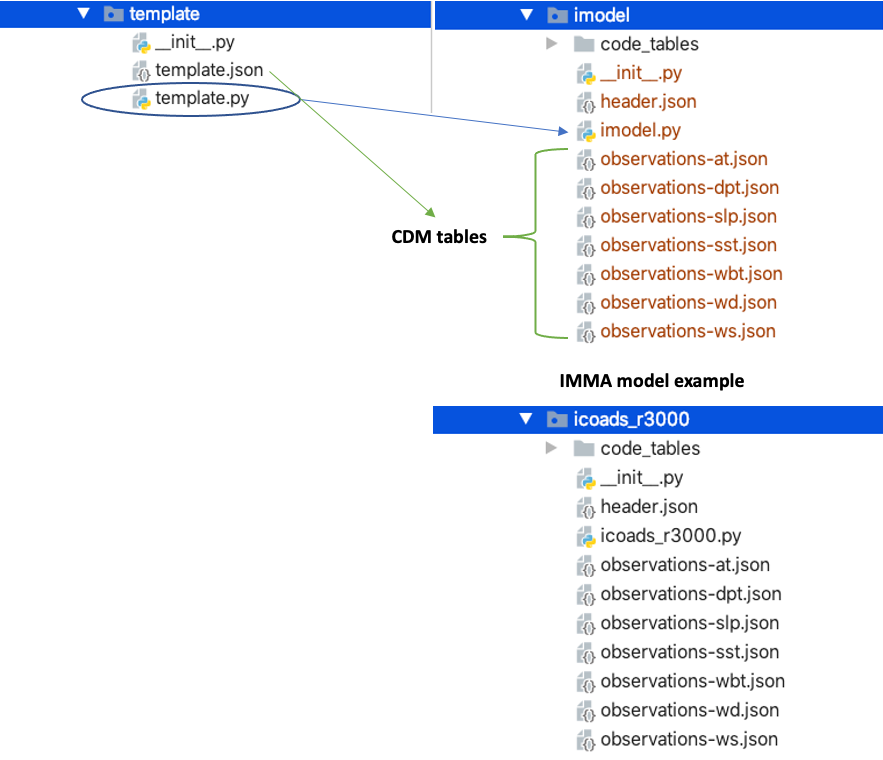How to register a new data model mapping¶
Using icoads_r3000 imodel as a reference, a data model (imodel) mapping can be understood in this context as:
- A generic mapping from a defined data model.
e.g. the IMMA data model (
imodel = icoads_r3000), which in this case maps core ICOADS variables into the CDM format.
- A specific mapping from a generic data model.
e.g. the case of mapping a specific ICOADS collection, where the
imodelis built for a specific source and deck (imodel = imma1_sid-dck).
- A combination of multiple data models in a single CDM mapping.
e.g. the case of mapping ICOADS.CORE variables and variables stored in the ICOADS supplemental data attachment (c99), this type of model is also source and deck dependent (
imodel = imma1_supp_model_sid-dck).
This is a summary of the steps needed to add an imodel to the mapping tool:
Copy the template mapping structure in the mappings library directory (
~/cdm-mapper/lib/mappings/template) to the same folder and re-name it according to theimodelthat you are going to add:

Directory structure of an imodel, showing the icoads_r3000 .imma data model as an example.¶
The
imodel.pymodule hosts themapping_functionsclass. These the functions used by the tool to map imodel elements to CDM elements (if required). All transform functions have to be defined under this class, so the mapper tool can access them.Additionally, an
__init__.pyfile needs to be added, so python can recognise the imodel directory as a module and this can be use by the tool.
Create a copy of the
template.jsonfile for each of the CDM tables in your imodel. To access the CDM tables templates available in the tool type:table_list = cdm.properties.cdm_tables
Your imodel should be looking something like the figure above.
Edit the mapping files (
*.json) and create the mappings to CDM elements (refer to CDM tables mapping files and descriptors for more information), this can be achieved using one of the following approaches:Direct mapping from an imodel element.
Direct mapping via
code_tablesthat can take one or multiple imodel elements.Assignment of a default value.
Any other mapping including any combination of the following can be achieved using functions defined in the
imodel.pymodule:
imodel elements attributes
parameterization with input keyword arguments
one or multiple imodel elements
transforming function from/to coded elements other than direct mapping with code tables can be defined here (i.e.: imodel key to CDM value or imodel value to CDM key)
Create Code tables to transform variables if these required a specific key to translate the information into the CDM.
Note
Click on next for a detail description on steps 3 and 4.
Warning
After finishing your new imodel, don’t forget to deactivate and then re-activate your python virtualenv or to reset your jupyter-notebook kernel, so the cdm tool recognises your new mapper. Alternatively you can pass to the main cdm.map_model function the directory path where you have stored your cdm imodel mapper (see API Reference for more information).